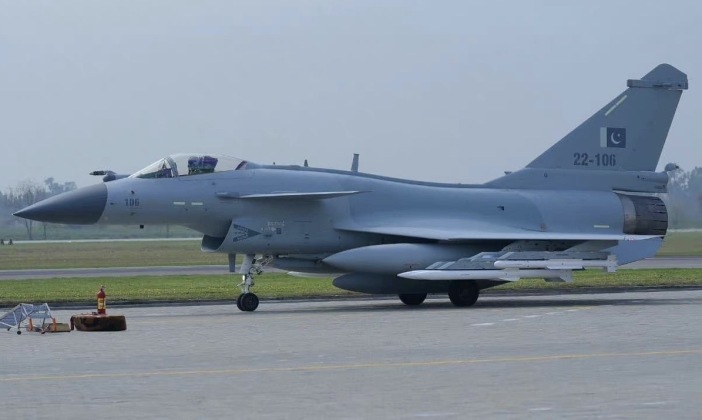Why Pakistan’s New J-10C Fighters Have F-22-Style ‘Golden’ Stealth Canopies
Military Watch Magazine
March-14th-2022
In the 13 years between the entry into service of the first J-10A fighters in 2005, and the latest most advanced variant the J-10C in the spring of 2018, the design has

militarywatchmagazine.com
In the 13 years between the entry into service of the first J-10A fighters in 2005, and the latest
most advanced variant the J-10C in the spring of 2018, the design has seen radical improvements going from a relatively basic fourth-generation jet into an aircraft with fifth generation capabilities in all aspects of performance other than its lack of stealth. Most notable improvements have included entirely new avionics, with new network centric warfare capabilities, helmet mounted sights and electronic warfare countermeasures making a very significant difference to combat potential, as well as integration of an AESA radar paired with PL-15 and PL-10 air to air missiles that are overwhelmingly more capable than the missiles of the original J-10, and the use of thrust vectoring engines. While not built around a stealth airframe like the fifth generation J-20, the ‘4++ generation’ J-10C has nevertheless seen its radar cross section reduced drastically complementing reductions to its radar section from its new sensor suite to make it more difficult to target at long ranges.
J-10C with PL-15 and PL-10 Missiles
With an estimated 200 J-10C fighters entering service in the Chinese People’s Liberation Army over four years from March 2018, the aircraft saw its first exports confirmed in December 2021 with Pakistan expected to by several dozen and possibly over 100 fighters. The first of these
landed in the country on March 4, and were formally
inducted into service on March 11. Pakistan’s J-10Cs are considered far more likely to see combat than those in China itself, with the Pakistani Air Force engaging in combat far more frequently whether in skirmishes with
neighbouring India or conducting airstrikes against various insurgent groups domestically. The Pakistani purchase has thus drawn new attention to the fighter’s features, as has the
possible sale of the J-10C to Iran which has been widely speculated, with the fighters considered the most likely to equip the Iranian Air Force should it seek to modernise its fleet with imported jets.
Pakistani Air Force J-10C with PL-15 and PL-10 Missiles
One feature of the J-10C which has gained considerable attention in Iran is the fighter’s ‘golden canopy,’ which is highly unusual for fourth generation aircraft but was previously seen on the J-20 and its American competitor the F-22 Raptor. Under some light conditions J-10C canopies appear golden due to an Indium Tin Oxide electroconductive film coating between the layers of optical glass, which provide this colouring and serve to scatter radio waves from the canopy to reduce the fighter’s radar cross section. It does so while maintaining transparency to visible radiation. The feature represents one of several next generation technologies being newly introduced into Pakistani service, and which it is the first in the region to benefit from. With the J-10C expected to form the elite of the Pakistani fleet for years to come, its ‘golden’ canopy serves to symbolise the aircraft’s status much as it does for the F-22 and J-20 in U.S. and Chinese service.














